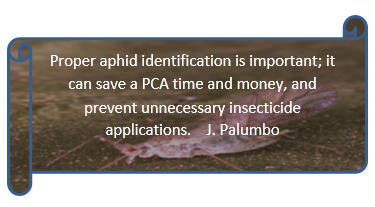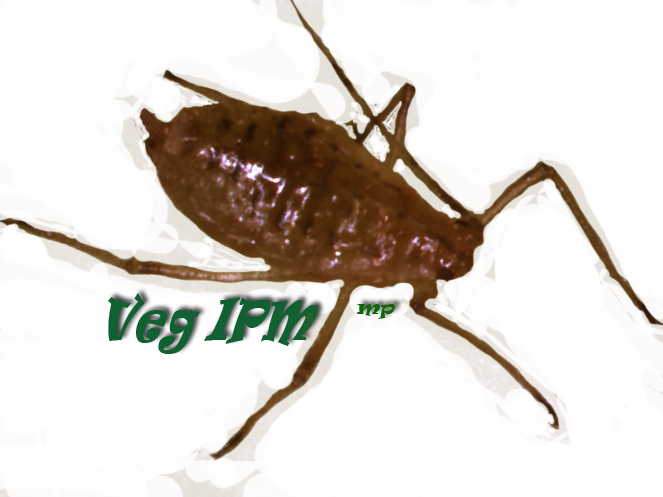
|
|
|
|

|
|||
|
|
|||
|
Now that the weather has finally broken a bit and the wind is actively blowing out
of the north and west, you should begin to see an increase in winged (alate) aphids
showing up on desert produce crops. This is an annual occurrence as our key aphid
pests on produce do not over-summer here, but rather migrate into our cropping system
from mountainous regions of southern California via wind currents during the late
fall. Once the aphids reach our desert valleys, they typically move from crop to
 
Remember, When in Doubt . . . . . “SCOUT”
Click picture to listen to John’s update
To contact John Palumbo go to: jpalumbo@ag.arizona.edu |
|||
| Back | |||
|
For questions or comments on any of the topics please contact Marco Pena at the Yuma Agricultural Center.
|
|||
|
Home |
Cotton | Veggies |
Forages | Grains
| Citrus |
Crop x Crop Insects | Diseases| Weeds | Pesticides | Economics | News | Weather | Research | Photos | Contacts | General Info. Copyright © 2001 University of Arizona, College of Agriculture and Life Sciences Webmaster: Al Fournier (acis@ag.arizona.edu) |
|||
